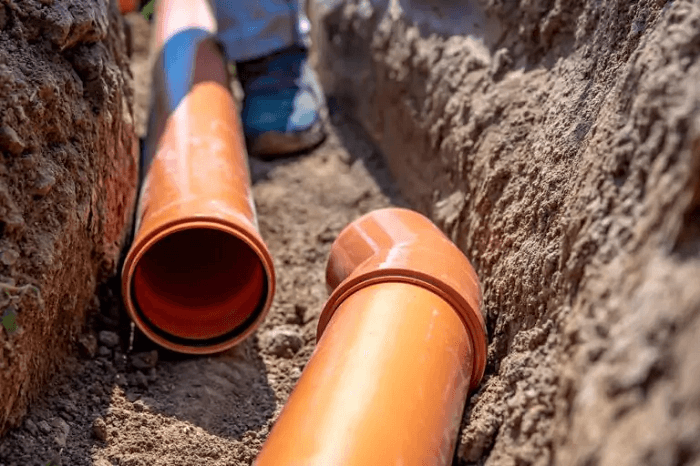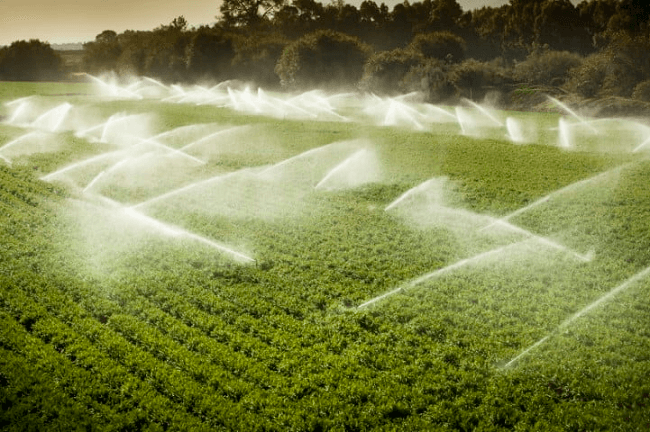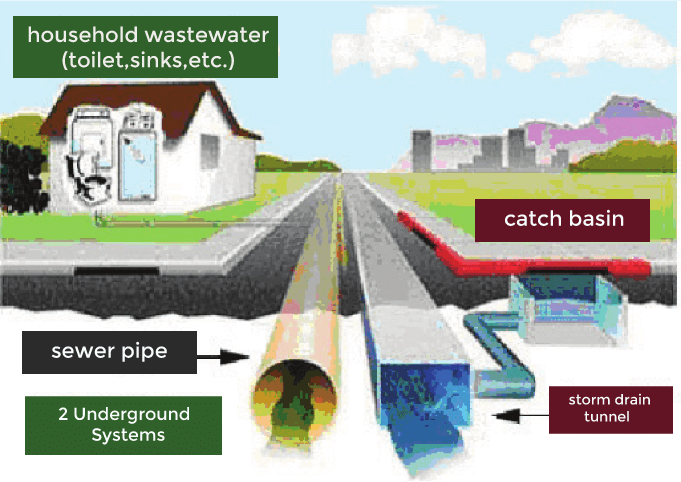Drainage DefinitionTo successfully manage excess water or wastewater or liquid, a drainage system is an essential and widely used method. Drainage is beneficial for removing excess water from various places, preventing floods and maintaining the overall health of the ecosystem. For sustainable growth, proper drainage systems are crucial, from urban infrastructure to agricultural practices. This article will examine the idea of drainage, its importance, and the numerous techniques used to manage water effectively. Defining DrainageDrainage is the process of eliminating extra liquids or water from a space to avoid collection and potential damage brought on by uncontrolled or stagnant water. It involves diverting water away from an area and into suitable outlets like rivers, lakes, or the sea by using a variety of systems, techniques, and natural processes. 
Major Purposes of DrainageFlood Prevention and MitigationThe prevention and reduction of floods is one of the drainage's main purposes. Drainage systems assist in reducing the risks brought on by high rainfall and unexpected weather occurrences by effectively diverting excess water away from cities, farms, and natural landscapes. Flooding can have disastrous effects, including loss of life, property destruction, and long-term economic effects. In order to protect communities and lessen the possibility of flooding, well-designed drainage infrastructure, such as stormwater management systems, can effectively channel water to the proper outlets. Preservation of Soil Health and ProductivityMaintaining the productivity and health of the soil depends on proper drainage. Waterlogging, which typically deprives plants of oxygen, vital nutrients, and root space, can result from excessive water retention. This undesirable circumstance hinders plant growth and reduces agricultural yield. Drainage systems encourage adequate soil aeration, improve nutrient availability, and reduce the danger of soil erosion by making it easier to remove excess water. Strong plant growth, sustainable agriculture, and food security are all supported by healthy soils. 
Infrastructure ProtectionDrainage infrastructure is vital for safeguarding various types of built infrastructure. Excess water can cause significant damage to roads, bridges, buildings, and underground utilities. Prolonged exposure to water and inadequate drainage can lead to erosion, foundation instability, structural deterioration, and increased maintenance costs. Well-planned drainage systems effectively manage water runoff, preventing its accumulation around infrastructure and reducing the risk of damage. By protecting infrastructure, drainage plays a crucial role in ensuring public safety and reducing the financial burden of repairs and replacements. Preservation of Ecosystem BalanceEfficient drainage contributes to the preservation and balance of ecosystems. Natural habitats, including wetlands, rivers, and lakes, rely on proper water management to sustain their delicate ecosystems. Excessive water accumulation disrupts the ecological equilibrium, leading to the loss of biodiversity, degradation of habitats, and altered hydrological patterns. By preventing waterlogging and controlling water flow, drainage systems help maintain the natural hydrological cycles necessary for the survival of diverse plant and animal species. They also support the quality of water bodies by minimizing the risk of pollution caused by stagnant water. Improved Water Quality and Resource ManagementEffective drainage systems not only remove excess water but also contribute to improved water quality. By preventing the accumulation of stagnant water, drainage helps mitigate the breeding grounds for disease-carrying insects and the growth of harmful bacteria. Additionally, well-managed drainage facilitates the natural filtration and purification processes of water as it flows through the soil, reducing the concentration of pollutants and improving overall water quality. This aspect is particularly crucial in urban areas, where stormwater runoff often carries pollutants from paved surfaces. By implementing sustainable drainage practices, such as green roofs and permeable pavements, communities can enhance water quality and ensure responsible resource management. Sustainable Development and Urban PlanningIn the context of rapid urbanization and climate change, the importance of drainage is paramount for sustainable development. As cities expand and impervious surfaces increase, the risk of urban flooding increases. Well-designed and integrated drainage systems become essential components of urban planning, enabling cities to withstand the challenges posed by climate change and ensuring the well-being of their inhabitants. Sustainable Urban Drainage Systems (SuDS), which mimic natural water absorption processes, have emerged as innovative approaches to urban drainage. Methods and Techniques of DrainageSurface DrainageSurface drainage involves the construction of channels, ditches, or culverts to collect and redirect surface water. This method is particularly effective in managing rainfall runoff in agricultural fields, urban areas, and transportation networks. Surface drains can be open, with exposed channels, or closed, with underground pipes. They are designed to capture and convey water to suitable outlets, such as streams, rivers, or storage ponds. Surface drainage systems help prevent water accumulation, mitigate erosion, and protect infrastructure from water-related damage. Subsurface DrainageWater from the root zone and lower soil layers is removed via subsurface drainage systems. In places with poor soil drainage, high water tables, or clayey soils that hold water, this technique is very helpful. Subsurface drains are made up of underground perforated pipes or tiles that let water infiltrate into the drainage system. The water that has been collected is subsequently sent to a storage area or an outlet. Crop yield is increased and soil aeration is improved through subsurface drainage, which also minimises waterlogging. It is frequently employed in landscaping, athletic grounds, and agriculture. Contour DrainageContour drainage is a method of controlling water flow that uses the contour of naturally sloping land. Surface water is intercepted and diverted to appropriate exits by drainage ditches built along the land's contour lines. By regulating water flow following the land's natural slope, this technique successfully minimises erosion. In steep or undulating environments, where traditional surface drainage may be difficult to implement, contour drainage is especially advantageous. Contour drains assist conserve soil moisture, lessen soil erosion, and maintain the integrity of the landscape by reducing water flow and encouraging infiltration. Sustainable Urban Drainage Systems (SuDS)The goal of Sustainable Urban Drainage Systems (SuDS), a cutting-edge water management strategy, is to mirror natural processes as closely as possible and lessen the negative effects of urban growth on the hydrological cycle. SuDS combine a number of strategies and elements that encourage surface water infiltration, storage, and regulated release. Green roofs, permeable pavements, rain gardens, swales, detention basins, and retention ponds are some SuDS elements that are frequently used. These features aid in treating and slowing down stormwater runoff, relieving pressure on conventional drainage systems, preventing flooding, and improving the quality of the water. SuDS also provide other benefits including improved aesthetics, increased biodiversity and urban cooling. Ditch and Channel MaintenanceRegular maintenance of ditches and channels is crucial to ensure the effectiveness of drainage systems. Over time, sediment, vegetation, and debris can accumulate, impeding the flow of water and reducing the capacity of the drains. Maintenance activities may include clearing vegetation, desilting, etc. Factors Affecting Drainage System DesignsThe effectiveness and long-term functioning of a drainage system must be carefully taken into account while designing it. The local topography, soil qualities, and hydrological patterns all play a significant part in choosing the most effective drainage systems and strategies to be used. The main influences on drainage system design are examined in this section, along with their importance for attaining efficient water management and reducing the problems brought on by water accumulation. TopographyThe design of a drainage system must take into account the topography of the area. The direction and flow of water are governed by the natural slope and contours of the terrain. Engineers can locate low-lying areas, depressions, and suitable drainage pathways by studying the topography. Using this knowledge, drains, ditches, and channels can be placed in a way that successfully collects water and directs it away from vulnerable places. To map the land and provide information for the design process, topographic surveys and elevation models are frequently employed. Soil CharacteristicsUnderstanding soil characteristics is essential for designing an efficient drainage system. Different types of soil have varying permeability rates, affecting the rate at which water infiltrates and drains from the area. Soil composition, texture, structure, and compaction determine its drainage capacity. Clayey soils have low permeability and tend to retain water, requiring more comprehensive drainage systems. On the other hand, sandy soils have higher permeability and can drain more readily. Conducting soil tests and assessments help engineers determine the appropriate drainage methods and system specifications to accommodate the soil's drainage characteristics. Hydrological PatternsAnalyzing hydrological patterns is vital for designing a drainage system that effectively manages water flow. Factors such as rainfall intensity, frequency, and duration influence the volume and rate of water runoff. Engineers study historical rainfall data and hydrological studies to understand the local water cycle, peak flow rates, and potential flood risks. This information guides the selection of appropriate drainage capacity, channel dimensions, and storage requirements within the system. Understanding hydrological patterns ensures that the drainage system can handle anticipated water volumes and prevent flooding. Land Use and DevelopmentThe land use and development plans for an area significantly impact drainage system design. Urban areas with extensive paved surfaces, such as roads, parking lots, and buildings, have limited natural permeability. These impervious surfaces result in increased surface runoff and decreased natural infiltration rates. As a result, urban drainage systems require additional measures, such as the use of permeable pavements, retention ponds, and stormwater management systems, to compensate for the reduced capacity for natural drainage. Understanding current and future land use plans helps in designing drainage systems that can accommodate the anticipated changes and mitigate potential drainage challenges. Environmental ConsiderationsDrainage system design should also consider environmental factors to minimize adverse impacts on ecosystems and water resources. Protection of water bodies, wetlands, and sensitive habitats is essential. Design features that promote natural filtration, such as vegetated buffer strips or constructed wetlands, can help remove pollutants from runoff before it enters water bodies. Preserving the natural hydrological balance and minimizing disruption to ecosystems should be prioritized during the design process. Environmental regulations and guidelines must be followed to ensure sustainable and responsible water management practices. Infrastructure IntegrationThe integration of drainage systems with existing infrastructure is another crucial factor to consider. The drainage system should be designed in harmony with other utilities and infrastructure elements, such as roads, buildings, and underground utilities. Coordination with relevant contractors and utility providers is necessary to avoid conflicts and ensure seamless integration. Incorporating drainage elements into overall urban planning and infrastructure development ensures efficiency and reduces the need for retrofitting or additional construction in the future. 
Effective drainage practices are vital for mitigating the risks associated with water accumulation, preventing flooding, preserving soil health, protecting infrastructure, and maintaining the balance of ecosystems. By considering the factors that influence drainage system design, it is possible to create efficient and sustainable solutions that address the specific needs of each environment. Topography, soil characteristics, hydrological patterns, land use, environmental considerations, infrastructure integration, and maintenance requirements all play a crucial role in designing effective drainage systems. Recommendations for Better Drainage Practices
Next TopicEducation Definition
|
 For Videos Join Our Youtube Channel: Join Now
For Videos Join Our Youtube Channel: Join Now
Feedback
- Send your Feedback to [email protected]
Help Others, Please Share










